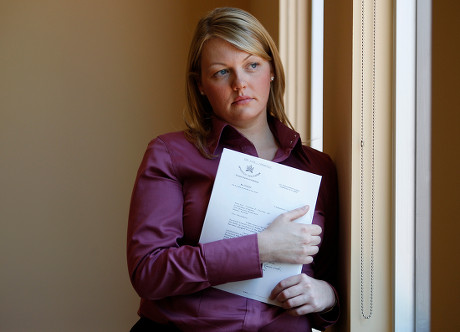
Joint and several liability refers to a common law legal system that allows two or more people to be liable for the same liability. Basically, two or more people are joint liable if they are responsible for the same act. This makes it unfair for both the defendants, and the injured party. There are several ways to apportion liability in cases involving joint and several liability. Here are the top considerations for deciding whether you can be held jointly- and severally responsible.
Limitation of joint- and multiple liability
Despite being an important legal concept, joint and several liability has been the subject of much debate in recent years. Its history shows that the concept failed to keep pace with changing legal landscapes and didn't adequately protect professionals. It can be argued that joint and several liability may have deterred many professionals from entering the field, but other liability regimes could lessen the risk of lawsuits. It comes down to limiting liability.
First, determine how much fault each defendant is liable. This will limit joint and numerous liability. This rule states that if one defendant is 50% at fault, it can't be held jointly responsible for more than 50%. The plaintiff can be held jointly liable for only a portion of noneconomic damages, if more that half of the fault is on the defendant. This limitation applies only to the plaintiff's claim.

Inequitable to defendants
The original concept of joint liability evolved in different circumstances to the present. In the past, a defendant could only be held liable for a plaintiff's loss if the plaintiff had also contributed to it. The contract was the basis of professional liability. It was impossible to recover economic losses through tort. Therefore, courts had limited power to assign liability between multiple defendants.
Proponents argue that proportionate liability is a cost-saving strategy. They claim that it prevents aggrieved parties from being compensated excessively. Supporters of joint and several liability argue that proportionate liabilities can reduce settlements and trial costs by settling the liability of a loss in a single trial and establishing an amount of contribution between the defendants. Canadian lawyers will be less competitive with joint and many liability opponents.
Protection for the injured
A comparative blame rule limits the amount an injured person can collect from a single party. The defendant's greater fault, the smaller the amount the injured party can collect. A joint and several liability rule does not apply to comparative fault cases, meaning that a plaintiff may still have to seek damages from the least at fault party. This rule is popular in the U.S., and it is usually preferred in personal injury cases.
In the event of multiple-party negligence, joint liability protection for injured persons allows an injured party recover compensation from any person and company that is legally liable. Multiple employers or architects can share responsibility for the damages, such as when an injured worker has been exposed at multiple sites. To collect payment from as many liable party as possible, the injured party may use joint and numerous liability.

Rules for apportioning liabilities
The rule of apportionment in tort law has evolved over time. In the early 20th century, apportionments were widespread, but the courts slowly abandoned them. As the economics of multiple defendant cases changed, courts tended to eschew apportionment, which had the potential to create invidious distinctions among defendants and create serious conflicts of interest. Today, the majority of defendants prefer prorata contribution. This gives them a higher offset in a case going to trial.
In negligence cases, each defendant's percentage of blame is used to determine their share of the fault. If there is more than one defendant at fault, the court will reduce damages for each defendant proportionally to their percentage of fault. Likewise, if one defendant was fifty percent at fault, the plaintiff does not have the right to recover damages. This rule was ultimately interpreted inconsistently in many states.
FAQ
Are all attorneys required to wear suits?
But not necessarily. Some people like to be casual while others prefer suits. Many lawyers dress casually. Some states do require lawyers to dress professionally.
Which type of lawyer are you best at?
A lawyer professional will not hesitate to ask the client what they need. They are prepared to go beyond the call-of-duty to ensure that clients receive the best representation.
Because they know that winning these cases will mean no business, they will be willing to accept cases other lawyers wouldn't take on.
Legal professionals know how to negotiate and can use their skills to obtain the best deal for their clients.
A person who is dedicated to providing exceptional service and high quality results. An individual who is able to think outside of the box, and come up with innovative solutions that others may not have considered.
Someone ethical and honest. Person who observes all rules and regulations that are set by government agencies and courts.
A strong work ethic and integrity are hallmarks of a legal professional.
What if I don't want to go to law school but still want to be a lawyer?
Yes, you can!
A degree from a non-lawyer institution is sufficient if you have a good understanding of the legal system and its workings. It is important to understand how laws work together, and how they differ.
You should be able read and understand statutes, regulations, court decisions, case law, and other legal documents. You should understand the basic concepts of constitutional law, administrative law, contract law, property law, criminal law, civil procedure, evidence, torts, bankruptcy, intellectual property, and employment law.
To practice law, you need to pass the bar exam. The bar exam tests both your legal knowledge as well as your ability to apply law to real-life situations. This exam tests your knowledge of the law as well as your ability to read and analyze cases.
The bar exam has two phases. One is the written section, and one is the oral section. The written part consists of multiple choice questions. The oral part consists of simulated trials. Before you can take the bar exam, it is important to study for at least a few months.
In addition to passing the bar exam, you will need to obtain admission to the state where you wish to practice law. You will need to apply for admission depending on where you are located. For more information, please contact the State Bar Association.
Statistics
- According to a 2019 Robert Half Legal Consulting Solutions survey, 54% of law firms were planning to expand their legal teams. (stfrancislaw.com)
- According to the Law School Admission Council, the number of people applying for these programs was up 13% last fall. (stfrancislaw.com)
- According to the Bureau of Labor Statistics, the average annual salary for lawyers in 2020 was $126,930. (stfrancislaw.com)
- The median annual salary for lawyers in 2016 was $118,160, according to the U.S. Bureau of Labor Statistics (BLS). (rasmussen.edu)
- Just 59.2 percent of 2015 law school grads held full-time, long-term jobs as lawyers 10 months after graduation, according to data from the American Bar Association (ABA). (rasmussen.edu)
External Links
How To
How to make an estate plan with a lawyer
A will, which is an important legal document, determines who gets what upon your death. It also contains instructions regarding how to pay any financial debts.
A will must be written by a solicitor and signed by at least two witnesses. If you wish to leave everything to someone without any restrictions as to how they use it, you can choose to not make awill. However, this may lead to problems later when you cannot consent to medical treatment or decide where people live.
If you do no have a will the state will designate trustees to oversee your estate until you pass away. This includes paying all of your debts and donating any property that you have. If there's no will, trustees may sell your house to make the funds available for your beneficiaries. They may charge a fee to manage your estate.
There are three main reasons to make a will. Firstly, it protects your loved ones against being left penniless. It ensures your wishes are fulfilled after you pass away. Thirdly, it makes life easier for your executor (appointed person to carry out your wishes).
Contact a solicitor first to discuss your options. The cost of a will depends on whether you're single, married, or widowed. Solicitors can also help with other matters like:
-
Making gifts to family members
-
The choice of guardians for children
-
Repayment of loans
-
Manage your affairs while you're still alive
-
Avoid probate
-
How to avoid capital gains Tax when selling assets
-
What happens to your house if you pass away before it is sold?
-
Who pays the funeral costs?
You have two options: either you can write it yourself or you can ask a friend or relative for help. However, if you sign a will on behalf of someone else, it cannot be changed.